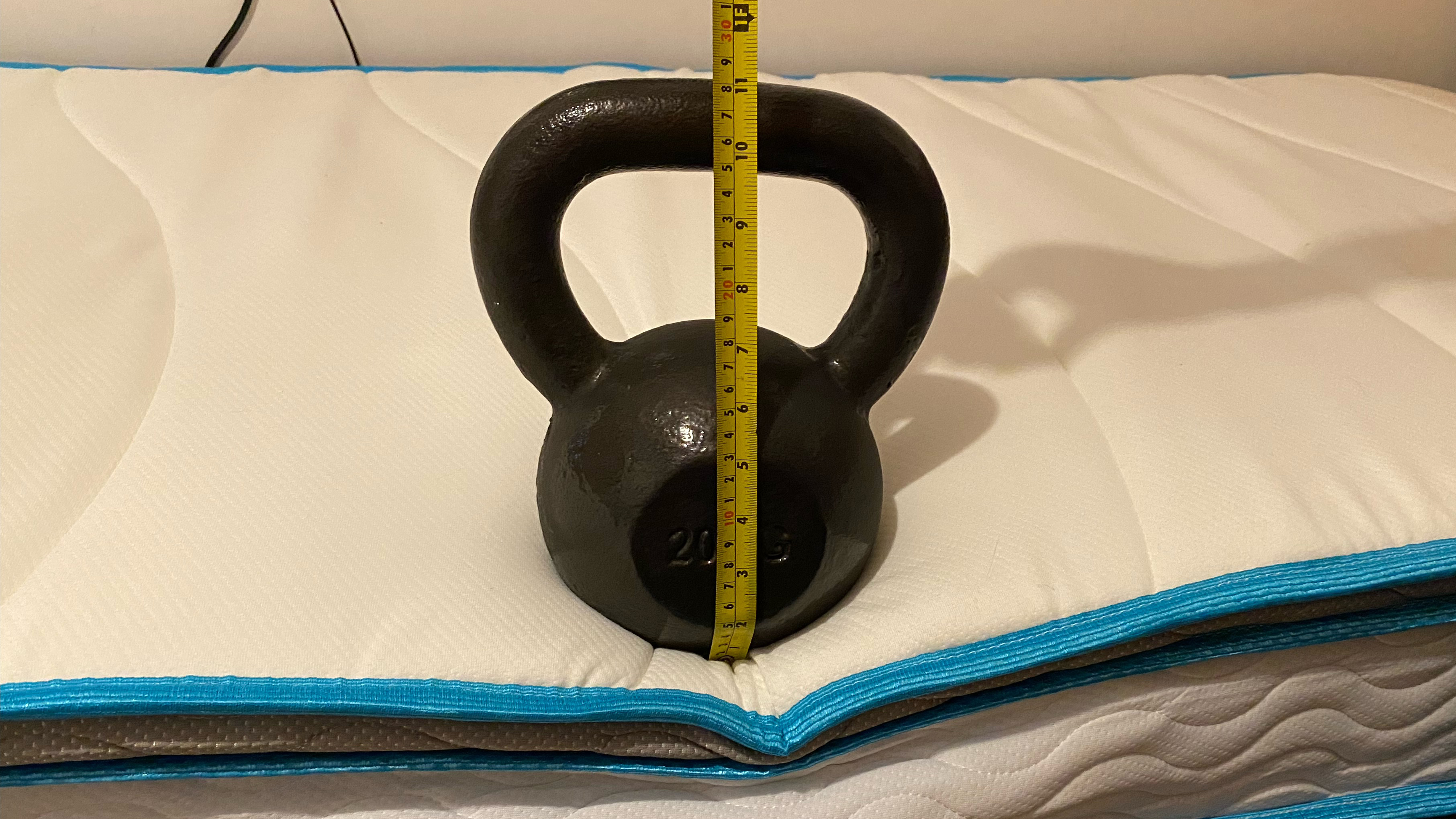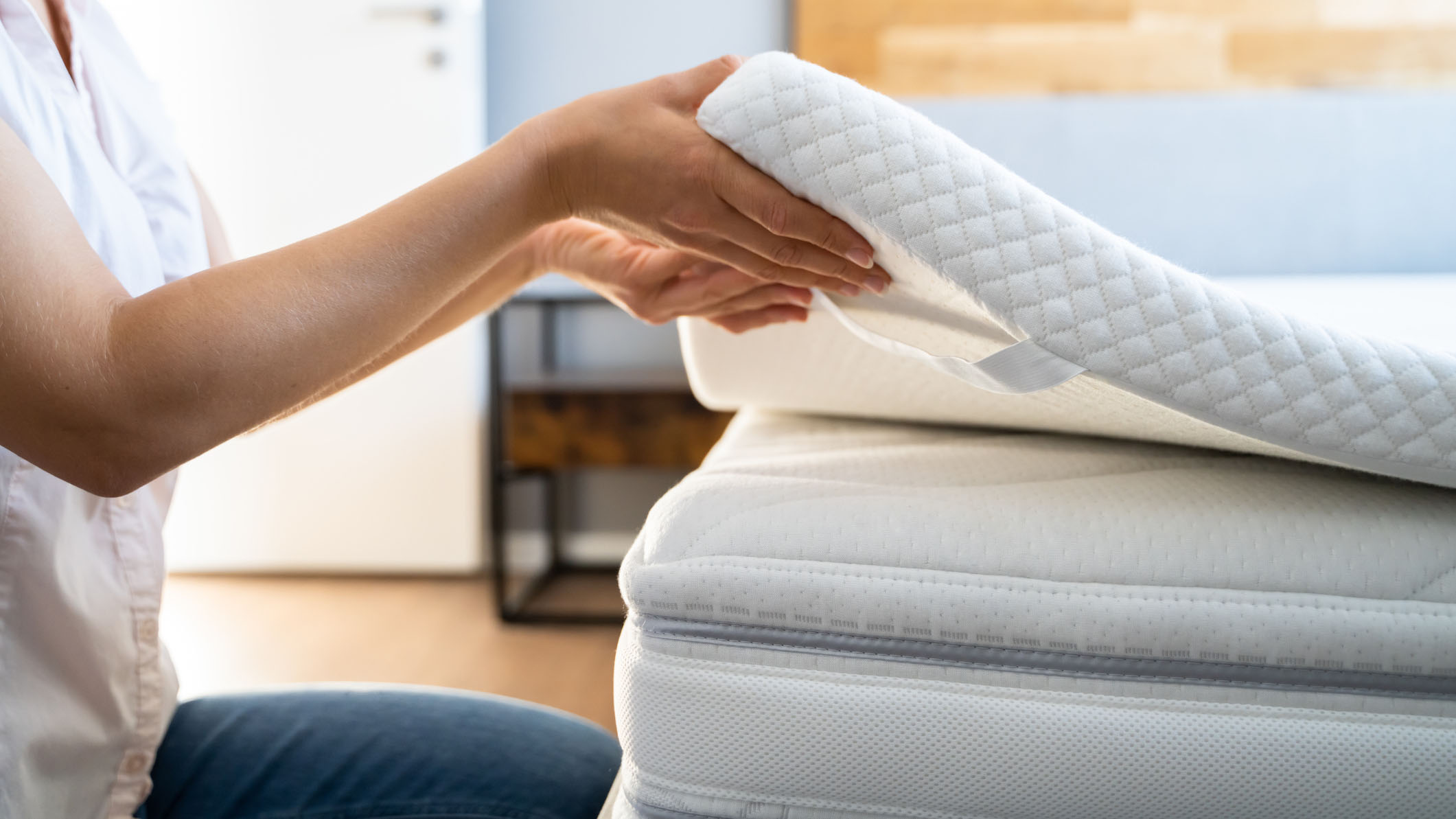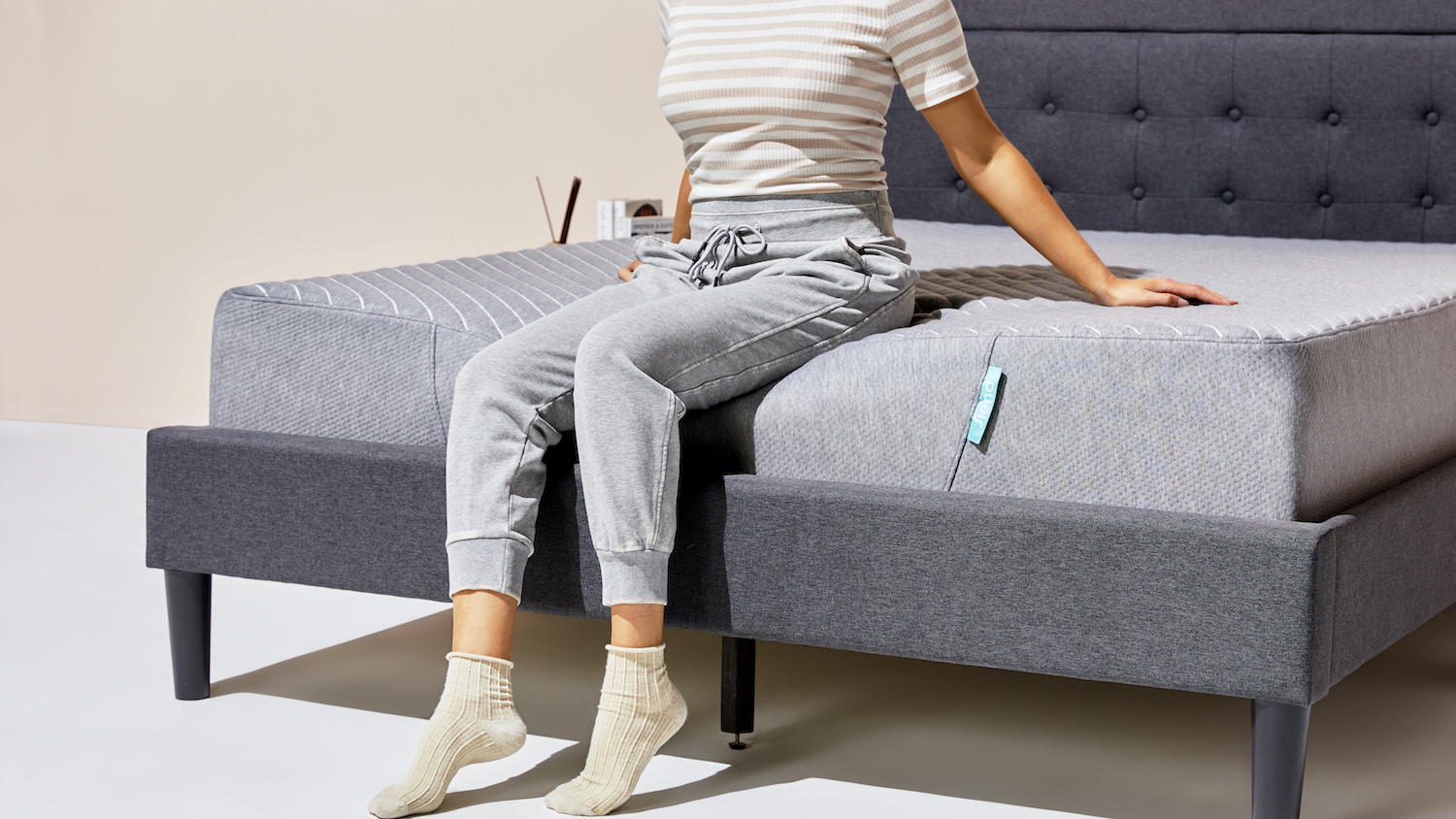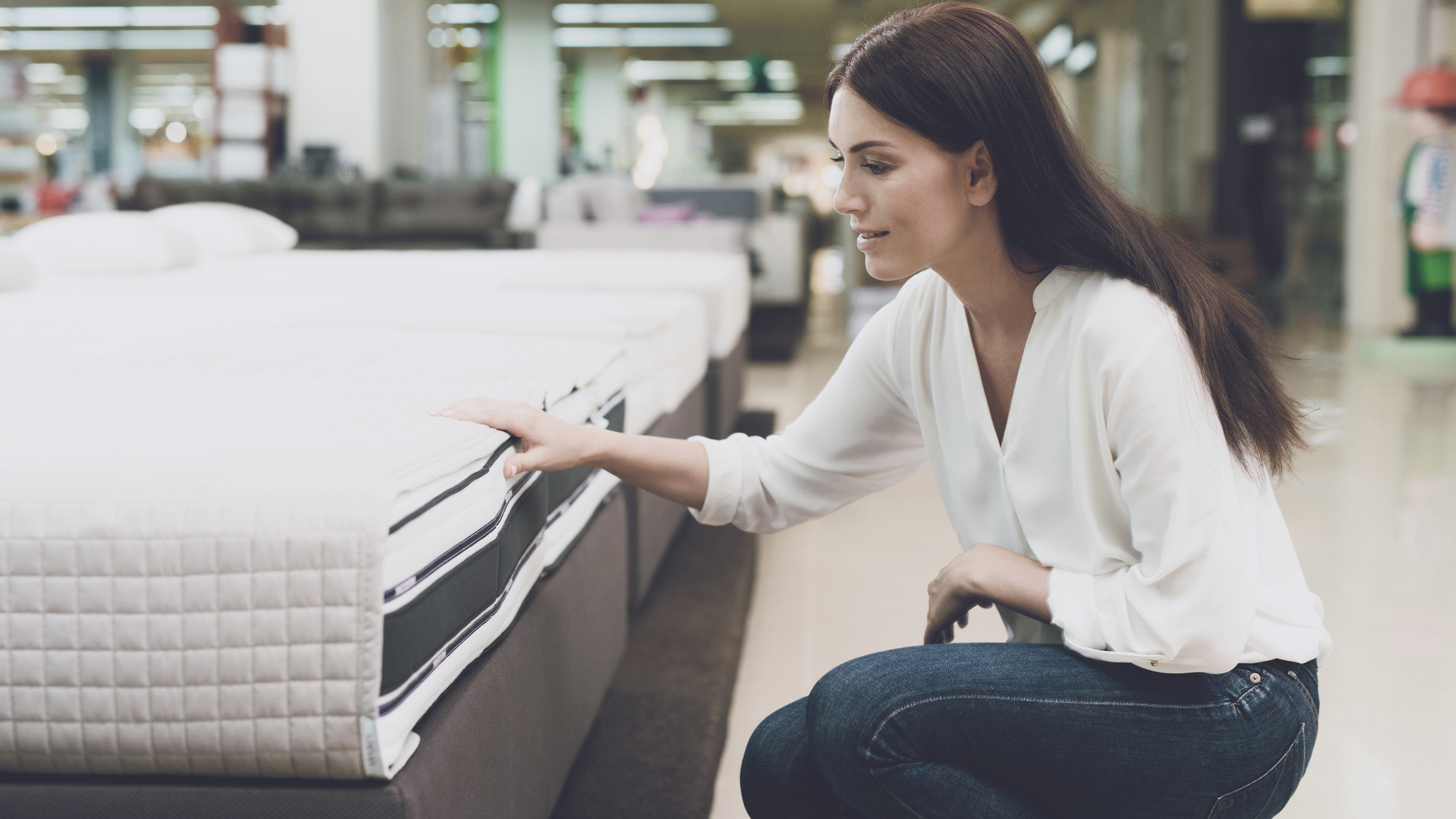5 things you need to know before buying a cheap mattress for $400 or less
Here's how to buy a cheap mattress under $400 without any surprises

Knowing how to buy a cheap mattress does involve looking for essential features that every affordable bed needs. However, you also need to curb your expectations of what a cheap mattress can offer you - especially those under $400 for a queen.
The best mattresses for under $400 may not boast the same premium materials and designs as luxury mattresses, but they can still boast great comfort and support. Here, we'll break down the five things you need to know before buying a cheap mattress, including what you can expect to find and how long they last.
We'll also show you how to buy the best cheap mattress that doesn't skimp on quality. Plus, we've rounded up three of the best cheap mattresses to buy today, so you don't have to spend hours trawling through this month's mattress sales.
- Read more: What is a Lucid mattress and should you buy one? I'm a mattress tester, here's what I think
5 things to know before buying a cheap queen mattress
1. The quality of materials might be lower
High-quality materials mean a mattress will come with a high price. While the best organic mattresses come with premium, sustainable, and non-toxic materials, they're also some of the most expensive beds on the market.

Meanwhile, the best cheap mattresses may have an affordable price tag, but this is usually due to using materials that aren't as durable or premium as those found in the best luxury mattresses. Also, don't expect to find the cutting edge temperature control found in the best cooling mattresses or organic materials such as natural latex. Instead, look for materials that are good quality but not high-end, such as cooling gel foam and soft, breathable covers.
2. They may not last as long as an average mattress
Most cheap mattresses have all-foam, innerspring, or hybrid designs, which tend to have a lifespan of five to 10 years, which is much less than the life expectancies of the most premium beds. For instance, the average lifespan of a mattress by Sleep Number (one of the best smart bed brands on the market) is 15 years due to its high-tech, high-quality features.

Innersprings are the cheapest types of mattress, but they also have the shortest life expectancy (5-7 years), followed by hybrids (7-10 years). The shorter life expectancy of hybrid and innerspring mattresses are thanks to their springs, which have a tendency to wear out easily. Memory foam mattresses tend to last slightly longer, but they should usually be replaced after 10 years.
Get instant access to breaking news, the hottest reviews, great deals and helpful tips.
Buying and replacing a cheap mattress instead of investing in a luxury bed might seem like a cost-effective choice, but keep in mind that if your inexpensive bed starts sinking, you could end up missing out on sleep.
3. The warranty might be shorter
The longer the warranty, the longer the mattress will last. Latex, one of the most expensive mattress materials around, is highly durable, so a latex mattress will last you up to 20 years and usually comes with anything from a 20-year warranty to a lifetime warranty.
However, you'll likely never find a cheap mattress that comes with a warranty of over 10 years, which usually indicates that it won't last over a decade.
4. They may need improving with a topper
While cheap mattresses can offer comfort and support on a budget, they usualy need some fine-tuning. You'll likely find that there's one or two minor problems with a mattress that can easily be fixed with the addition of the best mattress toppers.

For example, we always reccomend buying a mattress that's at least 10" tall, but a lot of cheap mattresses are around 6" or 8" tall. A shorter mattress will be much firmer than a mattresses of 10" or over, so you may need to add the best memory foam topper to add both height and plushness if you're a side sleeper. There's also plenty of cheap mattress toppers under $50, but we always advise readers to look for a topper that's between 2" and 4" tall.
5. You’ll find way more foam mattresses than hybrids

The best memory foam mattresses are usually much cheaper than the best hybrid mattresses, so you'll likely find more all-foam beds during your bargain hunting. While hybrid mattresses combine the support and breathability of springs with the comfort of foam, memory foam beds can still offer firm support and temperature regulation.
Memory foam may have pricked up a bad reputation for trapping heat or being unsupportive, but there are plenty of affordable memory foam beds with breathable covers and stabilizing., dense foam infused with cooling gel.
Top 5 tips for buy a cheap mattress
1. Look for a bed that suits your sleep style and body
First things first, you need to know how to choose a mattress that will support your preferred sleep position and body type:
- Side sleepers will need something soft and cushioning to relieve pressure in their shoulders and hips. Go for the best mattress for side sleepers that has firmness rating between 5 and 7 (medium to medium firm).
- Back sleepers need a medium-firm mattress to support their hips and provide pressure relief to their back.
- Stomach sleepers need something medium-firm to firm so their hips are supported and their spine is healthily aligned to avoid lower back pain..
- Heavy people (those who weigh over 230lbs) will need a mattresses that's sturdy and supportive, so go for a tall and firm bed.
- Lightweight people (those who weigh under 130lbs) will need something medium to medium-firm (depending on their sleep position) to provide enough cushioning for their petite frames.
- Hot sleepers need something that offers enough temperature regulation to keep them cool at night, such as hybrids or gel-infused foam beds.
2. Make sure it has CertiPUR-US certification

No, this isn't a fancy credential only awarded to the fanciest mattresses on the market - every bed, no matter the price - should have this certification. The CertiPUR-US certification verifies that a mattress meets certain safety and environmental standards.
In order to gain a CertiPUR-US certification, the mattress must undergo rigorous testing. Specifically, in order to be CertiPUR-certified, a foam must be made without Ozone depleters, heavy metals, certain flame retardants and harmful chemicals such as formaldehyde.
3. Check that the warranty lasts at least 10 years
A warranty is good indication of how long a mattress will last you. Most mattresses should last right up until your 10th anniversary, so treat any warranty of less than 10 years (or no warranty at all) with some suspicion. The average mattress warranty also lasts 10 years, with lower warranties usually reserved for mattresses marked final sale.
4. Look for cooling materials

Any mattress with springs will usually sleep cool thanks to airflow-boosting springs and coils. However, most cheap mattresses have an all-foam construction that isn't naturally breathable. Luckily, a lot of memory foam beds have cooling features that add some temperature control to the bed.
The most popular form of cooling in cheap foam beds are gel-infused foams, along with perforated foam for added ventilation. Another cooling feature to look out for is a breathable cover, usually made from cotton
5. Don't buy a bed that's under 10" tall

If you're wondering how thick a mattress should be, the answer is not 9" or under, so do not buy a short mattress that's under 10" tall. A mattress that's 10 to 12 inches tall will support the majority of adults and sleep styles, while plus-sized adults, couples and side sleepers may need something deeper.
If you must buy a mattress under 10", make sure to add a bed topper that's between 2" or 4" thick to add softness and make up for the bed's shallowness. However, mattress toppers don't add firmness and support, so stomach sleepers and heavy people will need to buy a 10"+ in the first place.
Top 3 mattresses under $400 for a queen
1. Siena Memory Foam mattress: from $499 $199 at Siena Sleep
The regular Siena mattress sale takes up to 60% off this memory foam mattress, meaning you'll always get a queen size for $399. Plus, there’s generous extras such as a 180-night sleep trial and free shipping and returns. Our Siena Memory Foam mattress review loved the edge support, temperature regulation and firm support this all-foam bed offers, making it the best mattress for stomach sleepers on a budget.
2. 10" Memory Foam and Innerspring Hybrid Mattress: from $199 at Linenspa
This mattress may not be on sale at the moment, but you'll still never pay anything more than $319 for a queen size. This budget hybrid bed impressed our testers for our Linenspa Memory Foam Hybrid Mattress review with great value for money. Be aware that this bed doesn't come with a sleep trial, but does come with 30-day returns.
3. 10" Green Tea Memory Foam Mattress: from $299 $249 at Zinus
Our Zinus Green Tea Memory Foam Mattress review ranks this as one of the best cheap mattresses for pressure relief, and you can get a queen-size Green Tea Memory Foam for as low as $399 (was $499). Extras include a 10-year warranty, 100-night trial, and free shipping.

Frances Daniels is a PPA-accredited journalist and Sleep Staff Writer at Tom's Guide with an MA in Magazine Journalism from Cardiff University. Her role includes covering mattress and sleep news and writing sleep product reviews and buyer's guides, including our Best Hybrid Mattress 2025 guide. She is interested in the relationship between sleep and health, interviewing an array of experts to create in-depth articles about topics such as nutrition, sleep disorders, sleep hygiene, and mattress care. She is also our specialist on mattress toppers — producing bed topper reviews and taking care of our Best Mattress Toppers 2025 guide — and leads content relating to fiberglass-free beds for a non-toxic sleep. Outside of Tom's Guide, she has written for Ideal Home and Marie Claire.



